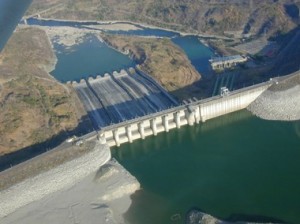
“Corn Capital of the Philippines”
The City of Ilagan is a component city in the province of Isabela, Philippines. It is also the capital, the largest city in the province and the fourth largest city in terms of land area in the Philippines after Davao City, Puerto Princesa and Zamboanga City.
History
Ilagan was an organized town even before the Spaniards came. The settlers used to call the place as “Bolo”. It is actually one of the most populous settlement during that period and site of the vast tobacco plantation in the region making it one of the most important economic areas in northern Luzon.
In May 4, 1686, Ilagan was founded and missionaries converted the natives to Christianity. Ilagan was then made the Capital of Cagayan Valley.
Population/ Language/ Area
The city’s total land area is 1,166.26 km2 (450.30 sq mi), which is being inhabited by 152,496 as of 2011.The rapid increase of population in Ilagan is attributed to the current growth in economic activities especially in the sectors of Commerce, Industry, Agriculture and Housing. Ilagan belongs to the 147 emerging cities in the Philippines with more than 100.000 residents). Statistics from the National Statistics Office showed that Ilagan has a total population of 79, 336 in 1990 and 99, 120 in 1995 with an annual growth rate of 2.5%. At present, the total population of Ilagan is 152,496. Using the projected annual growth rate of 2.5%, the population is expected to be 121.097 in 1999, 126,606 in 2001 and 131,243 in 2007.People who wish to make Ilagan their home could choose from a number of premium subdivisions that best suit their lifestyle.
Products and Services
Most of the industries in the town are agri-based. For the past ten years, there has been a great number of local investment in poultry and hog raising. At present, there are seven poultry contract growers and 33 small and medium scale hog raisers in the cityIlagan. Other support facilities, warehouses and small rice mills, strategically located in different barangays of Ilagan address the storage needs of farmers during the harvest season.
Tourist Attractions
Aguinaldo Shrine – Philippines Revolution was written when the American forces led by Gen. Frederick Funston finally captured Gen. Emilio Aguinaldo in the area on March 23, 1901.
Camp Samal – it is a historic Camp Samal a site of the National Jamboree in 1977. It has a lot area of 23.50 hectares, elevated mass of rolling hills 500 feet above sea level and it overlooks the mighty Cagayan River, the Pinacanauan River, the municipality of Delfin Albano, the town of Tumauini itself, and the Sierra Mountain ranges.
Dibulo Falls – it is located in Sierra madre mountain rage and it is known to be the notable spot in Isabela. It is one of the best attractions of Sierra Madre Nature Park.

Magat Dam – The first multi-purpose dam in Southeast Asia. It is located in the largest tributary of Cagayan River, the boundary of Ifugao and Isabela. A nearby destination is Camp Vizcarra.

